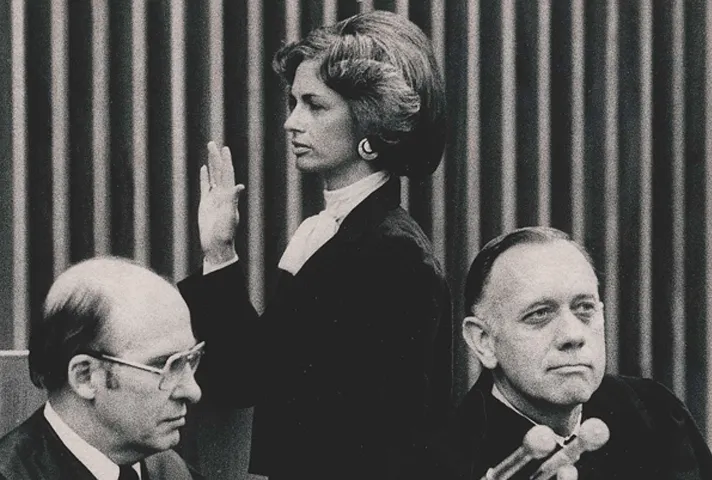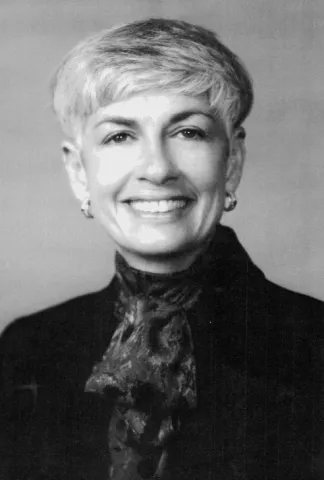
Stephanie Seymour is sworn into the Tenth Circuit Court of Appeals in 1979. Photo courtesy of Judge Seymour.
Judge Stephanie Kulp Seymour, who joined a historic class of women judges when she was appointed in 1979 to the 10th Circuit U.S. Court of Appeals, was encouraged early on by her parents to be an independent thinker.
While a youngster, she and her sister received the same encouragement as their two brothers. Seymour attended integrated public schools in Battle Creek, Michigan, but was home-schooled during long family trips around the country and overseas. She was exposed to different ways of thinking and, during one trip to the American South, to the startling injustice of racial segregation.

Judge Stephanie Kulp Seymour. Photo courtesy of Judge Seymour.
“It was shocking to me when we traveled in the South. There were all kinds of signs about colored people not being allowed, and the bathrooms were all segregated,” Seymour recalled. “It was very disturbing. My father taught us that everybody was equal and that segregation was bad.”
Her father, a building contractor who had not gone to college, strongly supported her education and hoped to send her to Harvard or Yale. But those Ivy League colleges did not accept women as undergraduates in the 1950s. Seymour believes now that Smith College, an all-women’s school in western Massachusetts, better prepared her to compete among men after her graduation.
“At a coed college coming out of high school, a lot of it was about meeting guys and dating, but Smith was different,” Seymour said. “During the week, it was all about learning. There were very, very good students, very bright girls, most of them not shy and retiring. So there were always active conversations about everything, which I really liked.”
At Smith, Seymour also found a passion for constitutional law and political science. By the time she entered Harvard Law School, in 1962, her self-confidence was well-honed.
“We thought we were certainly as smart as the guys who were at Yale and Harvard and Princeton. In fact, we knew we were,” Seymour said. “And so from our perspective, there was absolutely no reason why we couldn't do whatever we wanted to, or have whatever job we wanted. It was just a question of how to get there.”
After graduating in 1965, Seymour moved with her first husband to Tulsa, which had only five practicing women lawyers when she arrived. In addition to being a woman, she stood out among fellow associates because of her ability to write strong briefs. Seymour also persuaded her firm to let her work part time while she raised her children, a rare practice at that time.
Read the Series
This is the ninth in a series of articles about 23 women judges who in 1979 reshaped the federal Judiciary.
Seymour was delighted by her appointment to the 10th Circuit, in part because her enthusiasm for reading and writing was well suited to the work of an appellate judge.
In 1989, she heard an extraordinary appeal by Linda Brown, the young school girl in the famed Brown v. Board of Education case. By then an adult, Linda Brown Smith reopened the family’s original 1950s lawsuit, arguing successfully that her own daughter still faced school segregation because of the continuing segregated housing pattern in Topeka, Kansas.
Seymour also wrote a decision shielding an Indian tribal casino from Oklahoma taxation, recognizing the tribe’s status as a sovereign entity. “It’s been a fascinating job,” said Seymour, who was the Tenth Circuit’s first female judge, and later its first female chief judge.
Especially gratifying has been the changing face of the legal profession. “When I first joined the bench, hardly any women lawyers argued cases,” Seymour said. “Getting to see that change over time has been great.”
Subscribe to News Updates
Subscribe to be notified when the news section is updated.
